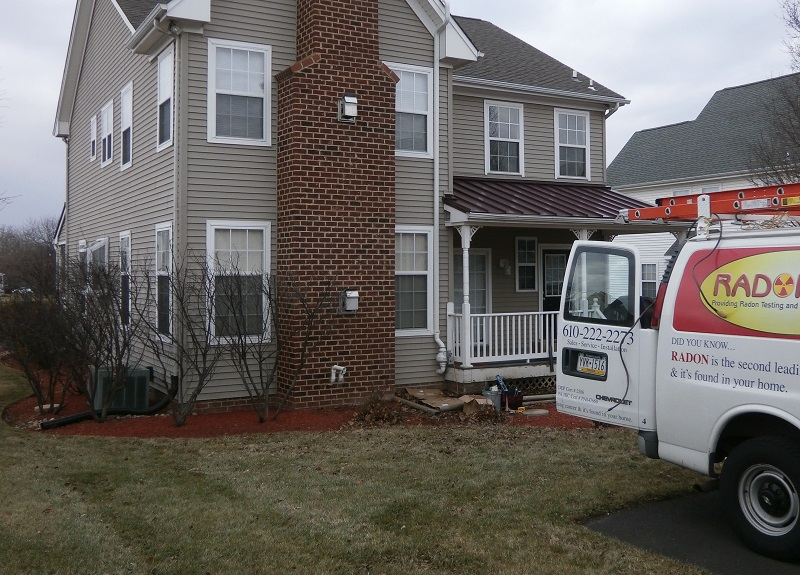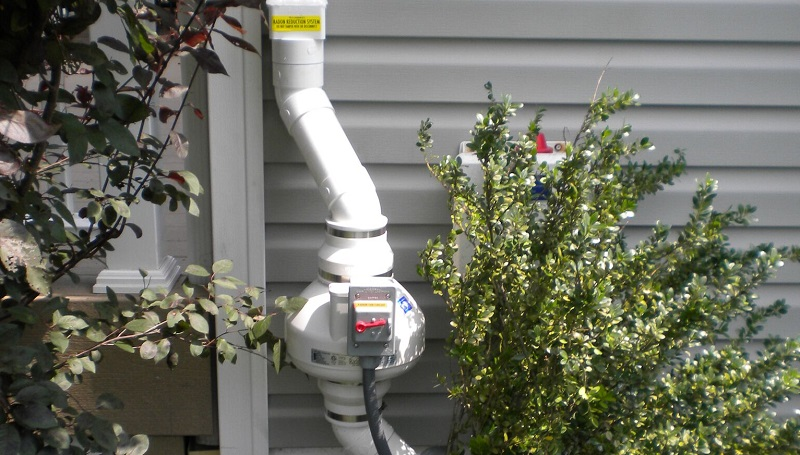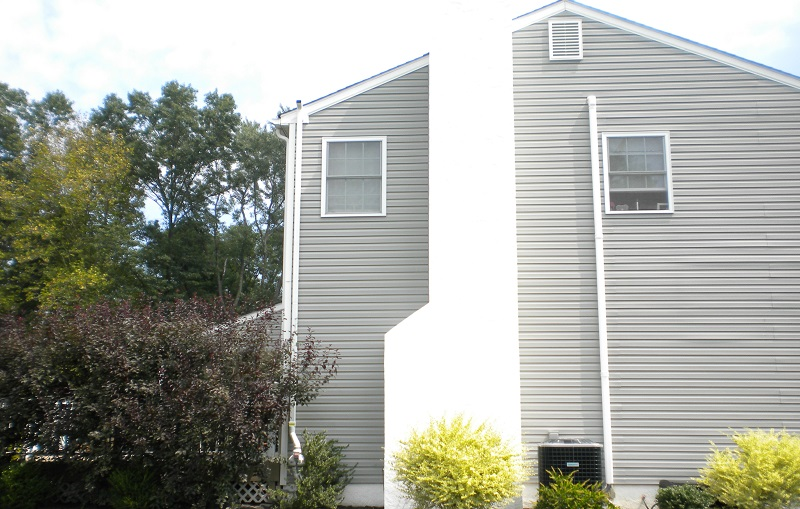FAQS about Radon Remediation
Many homeowners and business owners in Pennsylvania contact us with various questions regarding radon remediation. We have decided to compile those questions into FAQS about radon remediation. Our team wants to help you understand radon and radon remediation so that your family can stay safe.
What Is A Radon Remediation System?
 A radon remediation system reduces radon concentrations in the air of homes, offices and other buildings. Remediating radon involves both preventing radon gas from entering the home and removing the radon gas already present in the house. These systems can use different methods to remove radon, but the goal is the same.
A radon remediation system reduces radon concentrations in the air of homes, offices and other buildings. Remediating radon involves both preventing radon gas from entering the home and removing the radon gas already present in the house. These systems can use different methods to remove radon, but the goal is the same.
Why Should I Get A Radon Remediation System?
Radon is a radioactive gas that can cause harm to both you and your family. The gas is a leading cause of lung cancer in the United States, with around 21,000 yearly deaths attributed to radon exposure. Radon enters homes through cracks, construction joints, drains, and other openings in a house foundation. And because radon is undetectable by human senses, the only sure way to identify and remove the gas from your home is through testing and remediating. So be proactive to reduce your family’s risk of lung cancer.
How Does A Radon Remediation System Work?
One of the most common FAQS about radon remediation we get is about how mitigation systems work. Generally, radon remediation systems use a fan to pull air (which can have high levels of radon) from your home into a pipe, which then vents the air out of your home. An example of a typical remediation system would involve a fan located in the attic, which connects to a pipe that runs down the house, through the foundation, and into the aggregate. The fan runs, pulls radon-laden air from the soil before it can enter the house, and vents the air above the house. The type of system you get will depend on various factors, including the style of home you have.
What Are The Different Types Of Radon Remediation Systems?
 The 3 primary radon remediation methods are sub-slab depressurization, sub-membrane ventilation, and block wall suction. Each type of system utilizes different methods of removing radon from a building.
The 3 primary radon remediation methods are sub-slab depressurization, sub-membrane ventilation, and block wall suction. Each type of system utilizes different methods of removing radon from a building.
- Sub-slab depressurization works by running a fan to remove radon-laden air from beneath the foundation and then venting the radon gas to the outside of the home.
- Sub-membrane ventilation is similar to sub-slab depressurization but is most effective at removing radon from the soil, especially in buildings with earth-floored crawlspaces or basements.
- Block wall suction uses a fan and ductwork to draw suction on a concrete block wall’s hollow interior cavities. The system keeps the air pressure within the block wall lower than the air pressure in the basement to remove radon gas from the soil. Block wall suction prevents radon from reentering a house and is most often used on homes with hollow foundation walls.
What Is the Difference Between Active and Passive Remediation?
Another one of the more common FAQS about Radon Remediation we get involves the difference between active and passive systems. The difference between active and passive radon remediation is the method each type of system uses. Active methods use fans or ducts to actively pull radon from the air and vent the gas outdoors. Passive methods lack the fans of an active system, instead utilizing pressure differentials and natural air flow to vent the radon gas.
Which Type of Remediation Is Better: Active or Passive?
Active systems are considered more effective at venting radon from a house and are therefore more common. Passive systems struggle with high amounts of radon and are more inconsistent in their performance. Often, passive systems are built into new homes as preventive measures but can be converted to active systems at a cost.
What Type of Radon Remediation System Is Best For My Home?
The most effective remediation system for your home depends on your home’s construction. Sub-slab depressurization is the most commonly used method, but depending on your home, other methods may prove to be more productive. For example, if your basement is unfinished, sub-membrane ventilation could be the best choice for you. Part of our job is to evaluate your home and determine which system works best for you.
How Much Does It Cost To Reduce Radon In An Existing Home?
Another of the FAQS about radon remediation is how much does radon remediation cost. Like the most effective type of system, the price of a radon mitigation system depends on numerous factors regarding your house construction. Some of those factors include the following:
- House age, design, and size
- Type of foundation
- Construction materials used
Even the local climate and your own aesthetic choices play a role in system installation, and therefore the cost.
When Should I Get A Radon Remediation System?
 We recommend getting a remediation system installed in your home after getting radon testing results that indicate high levels of the gas. The EPA advises that radon should be mitigated at levels of 4pCi/L or more. However, due to the dangers radon presents, homeowners can choose to mitigate at lower levels to ensure their families’ safety. So after your home has been tested, you can begin working with a radon remediation specialist to reduce radon.
We recommend getting a remediation system installed in your home after getting radon testing results that indicate high levels of the gas. The EPA advises that radon should be mitigated at levels of 4pCi/L or more. However, due to the dangers radon presents, homeowners can choose to mitigate at lower levels to ensure their families’ safety. So after your home has been tested, you can begin working with a radon remediation specialist to reduce radon.
Do I Still Need To Test My Home After A Radon Remediation System Has Been Installed?
Yes, testing your home after installing a remediation system is recommended. We want to ensure that the remediation system is working and is effectively venting radon out of your home. Retesting, both in the short and long-term, is a smart proactive move to ensure that radon levels remain low in your house. Testing your home is also a good idea if your living patterns change, such as occupying a lower level of your home, or after significant alterations to your home.
Contact Radon-Rid, LLC for Answers to FAQS about Radon Remediation
We understand how important protecting your family is to you. So we want to work with you to create the best strategy for removing radon in your home and or business. We have certified, experienced, and insured radon testing, inspection, and remediation specialists on our staff to give our clients peace of mind and healthy bodies. If you have any more FAQS about radon remediation or would like a free consultation, contact us today.
We Want to Help
"(required)" indicates required fields
Radon – The Silent Killer
Radon In Your Home
- Learn More About Radon Levels in Your County
- Take a few minutes to browse our Get To Know Radon Online Presentation.
- When you are finished, be sure to tell a loved one about our testing programs offered in Berks, Chester, Delaware, Lancaster, Montgomery & Philadelphia Counties.